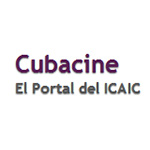Graduado de realización cinematográfica en la Universidad Nacional Autónoma de México (UNAM) de la primera generación. Se vincula al teatro dirigiendo la obra El corrido de Pablo Damián, entre 1954 y 1957. Después, estudia dirección de actores y escénica, antes de comenzar su labor en el cine como asistente de dirección de Juan Ibáñez en el filme Los caifanes (1966). Luego, realiza numerosos cortos publicitarios, y entre 1968 y 1970 fue profesor de realización y guión en el Centro Universitario de Estudios Cinematográficos (CUEC). Ha escrito artículos especializados para diferentes órganos de prensa.
Entre los filmes más celebrados de su primera época, se cuenta la coproducción con Estados Unidos Yori, un niño llamado muerte (1972), un cuento sencillo y poderoso sobre un niño que se transforma en vengador luego de contemplar el asesinato de su padre, y el tercer episodio de Fe, Esperanza y Caridad (1973), que ganó el premio Diosa de Plata de los periodistas cinematográficos de México. A renglón seguido dirigió Cinco mil dólares de recompensa (1975), sobre un guión de Arturo Ripstein. La consagración definitiva le llegó con el largometraje de ficción Los albañiles (1976), laureado con el Oso de Plata en el Festival de Berlín, y con el documental Así es Vietnam (1979), con guión de Gabriel García Márquez.
Con guión y dirección de Jorge Fons (en colaboración con Luis Carrión y Vicente Leñero en el guión) y protagonismo de Ignacio López Tarso y José Alonso, Los albañiles cuenta lo que ocurre luego de que aparece asesinado el velador de una construcción, y varios albañiles tienen sobrados motivos para desear su muerte.
Los mayores éxitos de Jorge Fons llegarían en los años noventa, con Rojo amanecer (1990), pero sobre todo con la muy elogiada El callejón de los milagros (1994), adaptación de una novela del egipcio Naguib Mahfuz en la cual se traslada el ambiente social y humano de El Cairo a Ciudad de México, y presenta una serie de personajes desamparados y marginales acechados por un destino ciego.
Melodrama costumbrista a medias entre el humor y la ternura, El callejón de los milagros es un filme sobrio, que elude el registro telenovelero gracias al registro tragicómico, la estructura cíclica que vuelve sobre los escenarios interiores, y a la naturalista obsesión de los personajes con el sexo y el dinero. De acuerdo con la guía crítica Time Out, “Fons fragmenta la historia en cuatro episodios, cada uno contado desde un punto de vista diferente, y aunque todo el argumento se acerca peligrosamente a la telenovela, la interrelación de las cuatro historias es realmente sagaz y sorprendente, y el filme se crece con su poderoso ritmo y su humor escatológico".
Jurado en numerosos festivales, pedagogo, primero secretario de la sección de autores de la Academia de Ciencias y Artes Cinematográficas de México, y luego presidente de la misma Academia, Jorge Fons considera que “el Nuevo Cine Latinoamericano seguirá siendo una propuesta válida y actual en la medida en que acompañe y registre los cambios políticos y culturales de Latinoamérica, y aún más que seguirlos, los vislumbre y los anteceda, plasmándolos en imágenes, en sus historias, en sus discursos”.
He graduated as a filmmaker at the Universidad Nacional Autónoma de Mexico (UNAM) (National Autonomous University of Mexico) of the first generation. He joins the theatre in the direction of the play El corrido de Pablo Damián, between 1954 and 1957. Later he studied actor and stage direction, before he started his career at the cinema as director assistant for Juan Ibáñez in the film Los caifanes (1966). Afterwards, he made numerous short advertisements and between 1968 and 1970 he taught filmmaking and script at the Centro Universitario de Estudios Cinematográficos (CUEC) (University Center for Cinematographic Studies). He has written specialized articles for different newspapers.
Some of the most celebrated films he made during his time are a co- production with the United States, Yori, un niño llamado muerte (1972) a simple and powerful story about a boy who becomes an avenger after he witnesses his father’s killing, and the third episode of Faith, Hope and Charity (1973), which won the Diosa de Plata Prize awarded by the cinematographic journalists from Mexico and immediately afterwards he directed Cinco mil dólares de recompensa (1975), based on a script by Arturo Ripstein. He achieved his definite consecration with the narrative feature film Los albañiles (1976), prizewinner of the Oso de Plata at the Berlin Festival, and with the documentary Así es Vietnam (1979), with a script by Gabriel García Márquez.
With a script and direction by Jorge Fons (in collaboration with Luis Carrión and Vicente Leñero in the script) and Ignacio López Tarso and José Alonso in the main characters, Los albañiles tells the story of the events that took place after the killing of the watchman of a construction site where there are several masons who have enough reasons to wish him dead.
But Jorge Fons greatest success would take place during the 1990´s, with Rojo amanecer (1990), but above all with the highly praised film El callejón de los milagros (1994), adaptation of a novel by Egyptian writer Naguib Mahfuz in which the social and human atmosphere of Cairo is transferred to Mexico City and a group of underprivileged and marginal characters who are lurked by a blind destiny is presented.
A mores studies melodrama half way between humor and tenderness, El callejón de los milagros is a sober film, which avoids the soap opera like register thanks to its tragicomic register, the cyclic structure that turns to the interior settings and the naturalist obsession of characters with sex and money. According to the critical guide Time Out, “Fons fragments the story in four episodes, each of them told from a different point of view, and although the plot comes dangerously close to a soap opera, the interrelation among the four stories is really sagacious and surprising, and the films acquires dimension with its powerful rhythm and scatological humor.
He has been juror at various festivals, a professor, the secretary of the author’s section of the Cinematographic Science and Art Academy of Mexico first, and later its president. Jorge Fons considers that “the new Latin American cinema will continue to be a valid and present proposal as long as it moves with and registers the political and cultural changes of Latin America, even more, as long as it follows them, foresees them and anticipates them, giving them shape through images in their stories and their discourses.
 “Nuestro objetivo final es nada menos que lograr la integración del cine latinoamericano.
Así de simple, y así de desmesurado”.
“Nuestro objetivo final es nada menos que lograr la integración del cine latinoamericano.
Así de simple, y así de desmesurado”.













